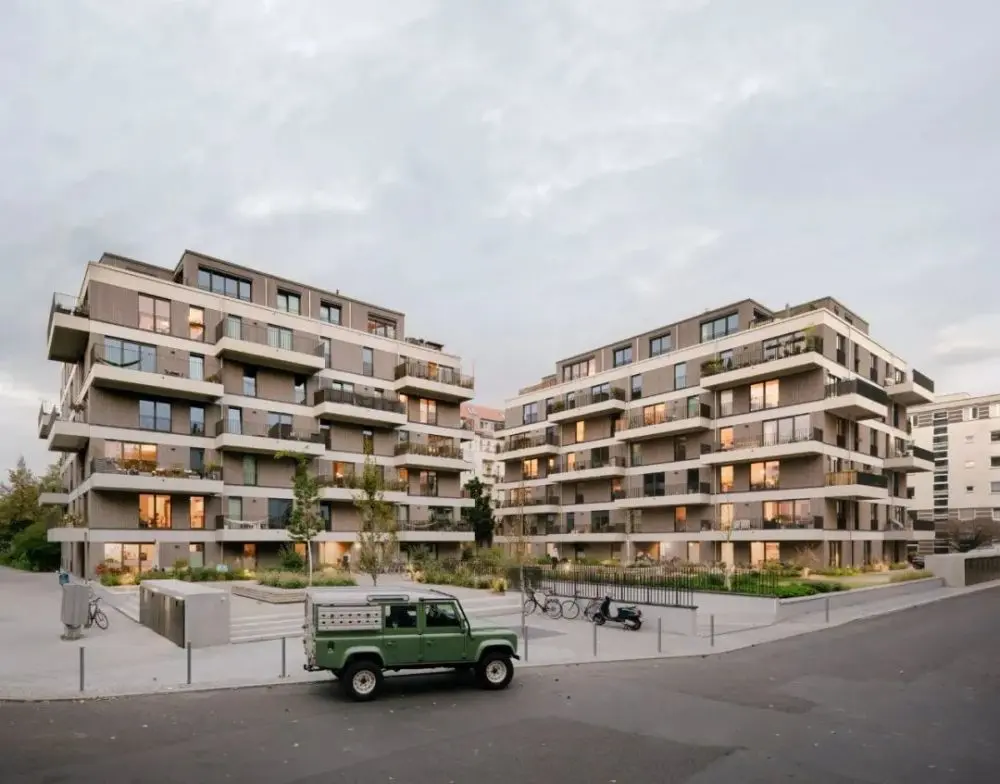
柏林-特雷普託Schmollerplatz周圍的城市結構始建於1930年代。然而,廣場上的大多數建築都是1950年代建造的住宅區。
當一家上世紀70年代的超市被拆除時,重新構思了Schmollerplatz廣場上的一塊形狀不規則且位置獨特的用地,以考慮社區的重建和對額外生活空間的需求。
The urban structure surrounding Schmollerplatz in Berlin-Treptow was conceived in the 1930s. Yet most of the buildings on the square are housing complexes built in the 1950s. When a former supermarket from the 1970s was torn down, an unusually shaped and situated plot of land on Schmollerplatz was reconceived in an effort to take the neighborhood’s restructuring and its need for additional living space into account.
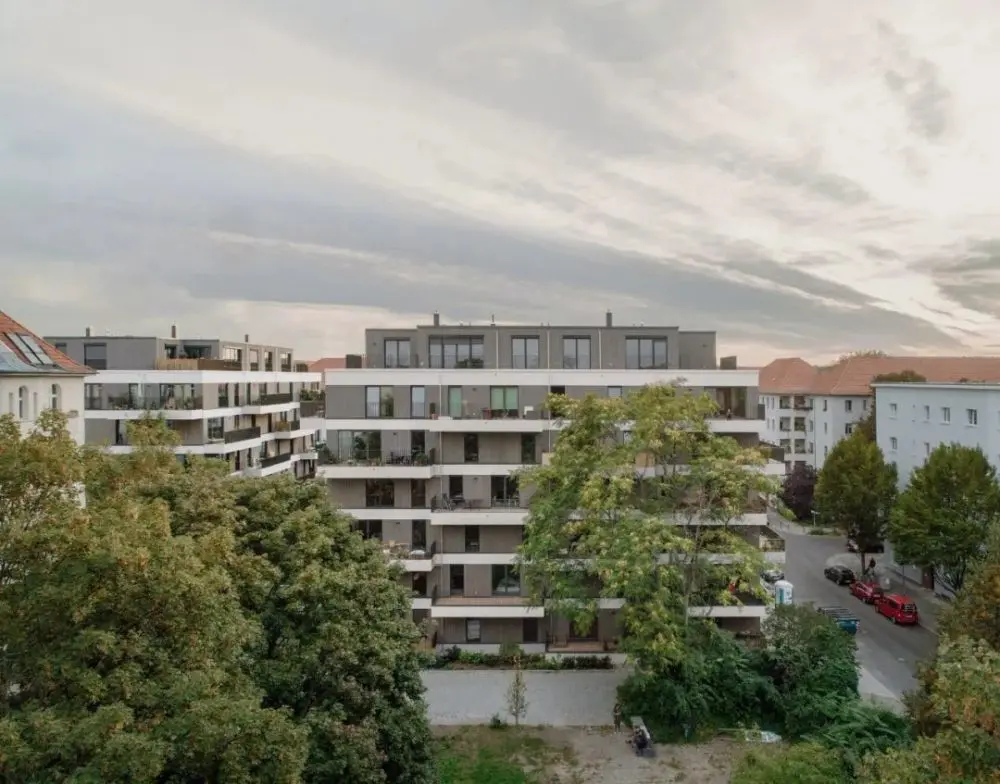
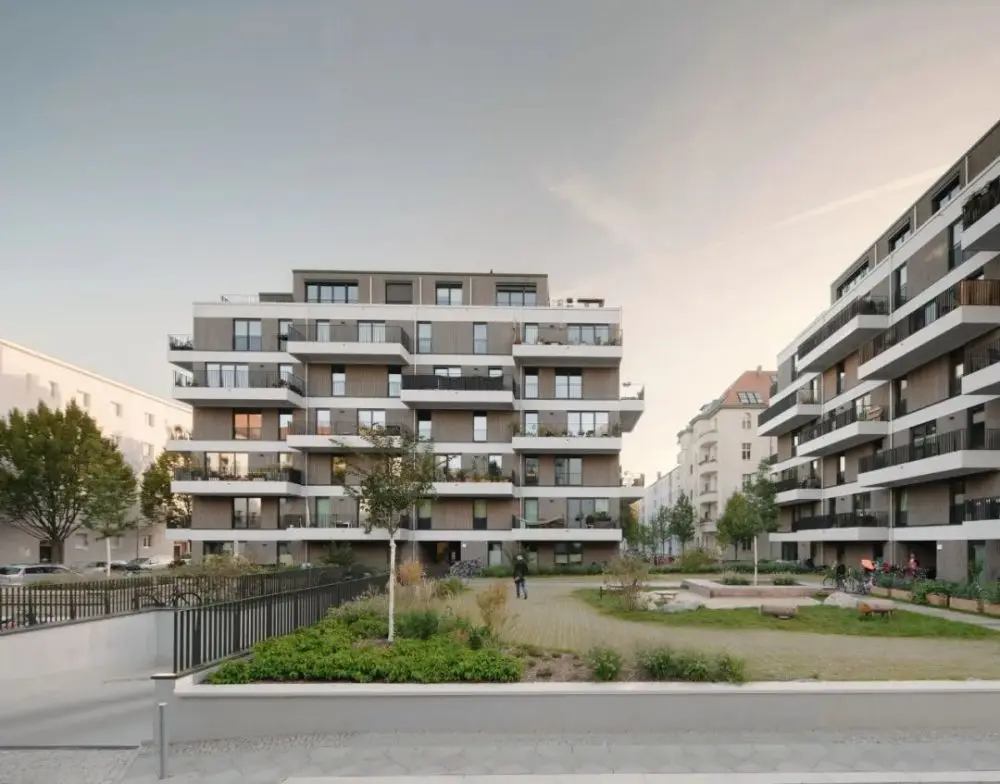
該項目對一個城市街區來說過小,但對一棟建築來說卻太大了,取而代之的是採用兩座相同的住宅建築,以90度角放置在高0.75米的高地上。
通過這種佈置,建築為Schmollerplatz公園般的區域提供了一個空間結論。它們的輕微抬高形成了一個私人入口,區分了廣場的公共和私人室外空間。
在Onckenstrasse和Lexisstrasse交匯的地方,建築創造了一個新的城市廣場和一個共享的室外空間,成為該項目的關鍵。
Too small for a city block, yet too large for a single building, the project instead takes the form of two identical residential buildings positioned at 90-degree angles on a plateau raised by 0.75 meters. Through this arrangement, the buildings provide a spatial conclusion to the park-like area of Schmollerplatz. Their slight elevation creates a private entryway, drawing a distinction between the public and private outdoor spaces of the square. Where Onckenstrasse and Lexisstrasse meet, the buildings create a new urban square and a shared outdoor space that serves as a lynchpin for the project.

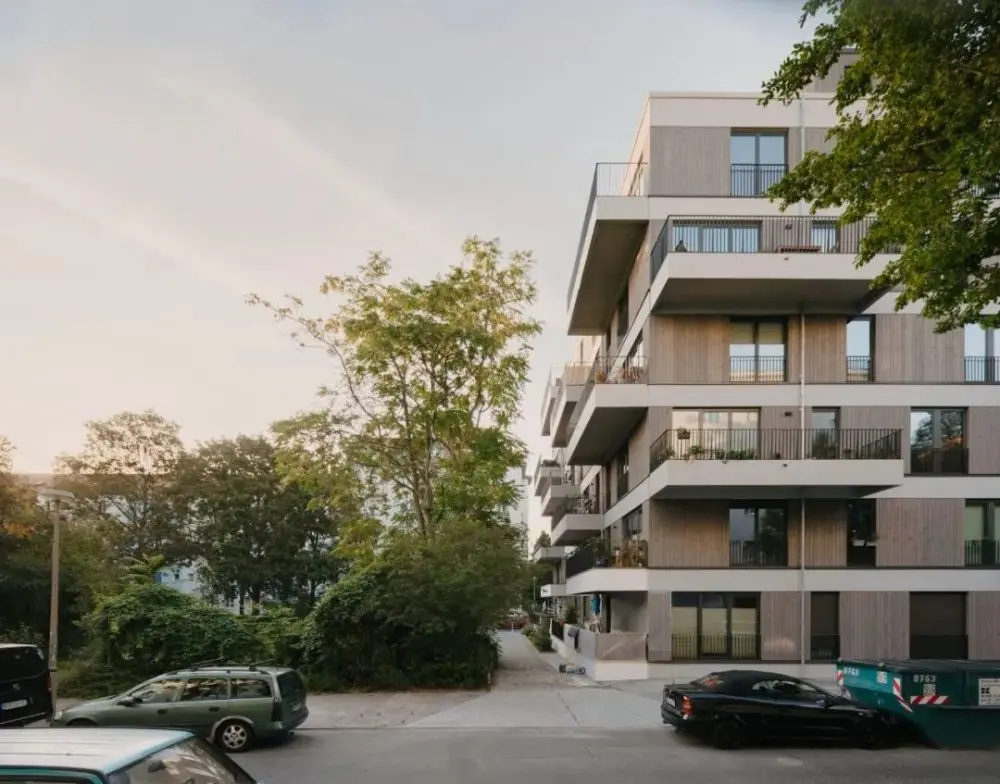
底層不佔用公眾空間,而是積極地利用直接地面通道的可能性,將周圍屬於建築的區域變為可進入的區域。所有底層公寓均設有私人花園或高架露臺。
上層的公寓均設有大陽臺,而階梯式夾層的公寓則設有種植的屋頂露臺。這兩座建築都可以通過寬敞的樓梯井進入,樓梯井具有采光良好的中庭和開放式樓梯。
The ground floor, instead of closing itself off from the public, makes aggressive use of the possibility of direct ground access by taking the surrounding areas that belong to the property and rendering them accessible. All ground-floor apartments feature a private garden or raised terrace. The upper-floor apartments all feature large balconies, while the apartments on stepped mezzanine floors feature planted roof terraces. Both buildings can be accessed via spacious stairwells featuring well-lit atriums and an open staircase.
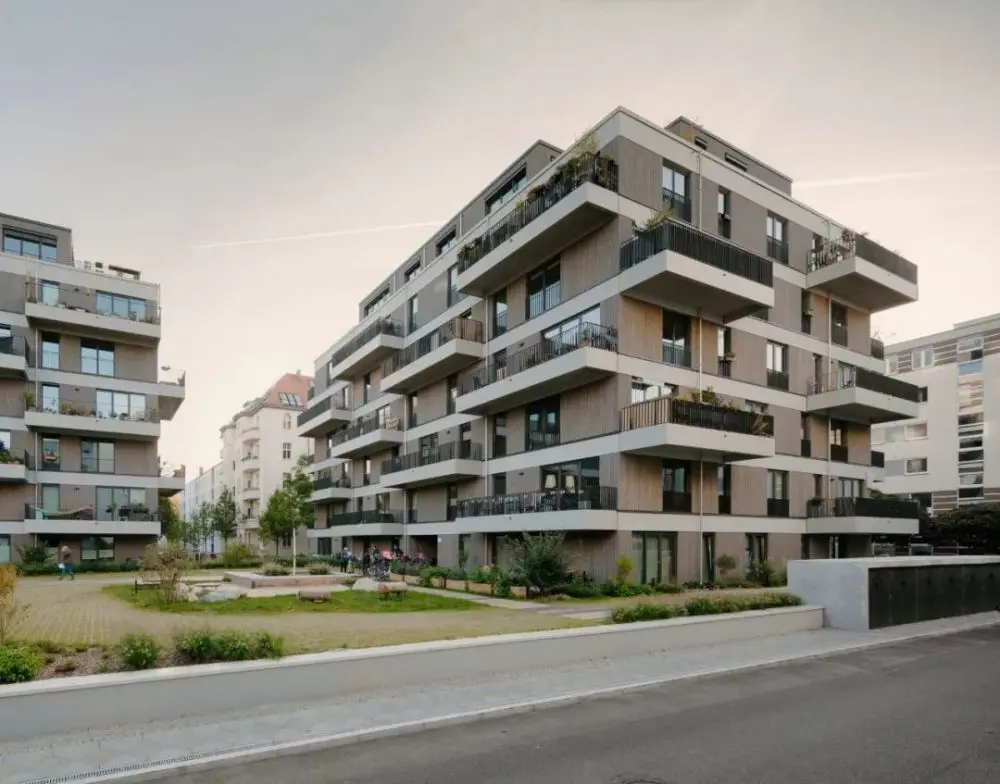
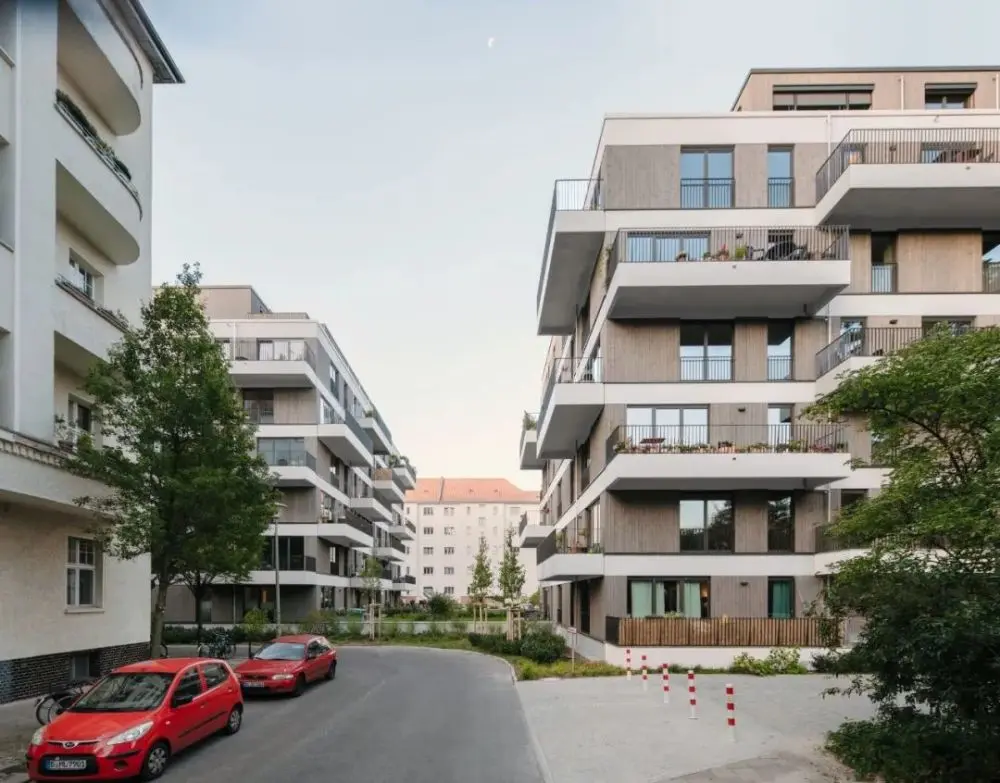
建築的外立面由清水混凝土,混凝土之間的木製填充物以及交錯排列的陽臺構成。配上懸挑的陽臺和有趣的窗口,也能很容易看出設計原則的嚴謹性。
通過錯開拐角處的陽臺,強化了其立體感。
建築體量與眾不同之處在於其最大的靈活性以及對空間和材料的有效利用。建築的流線設計使公寓鑰匙能夠根據需要進行調整。
The building’s appearance is defined by bands of exposed concrete, a wooden infill between the concrete bands, and the staggered pattern of balconies. Despite the jutting balconies and playful window openings, it is easy to recognize the rigor of the design principle. By staggering the balconies over the corners, the corners of the buildings are emphasized and their cubic appearance is strengthened. What distinguishes the building volumes is their maximal flexibility and their efficient use of space and material. The design of the building’s circulation enables apartment keys to be adapted as needed.
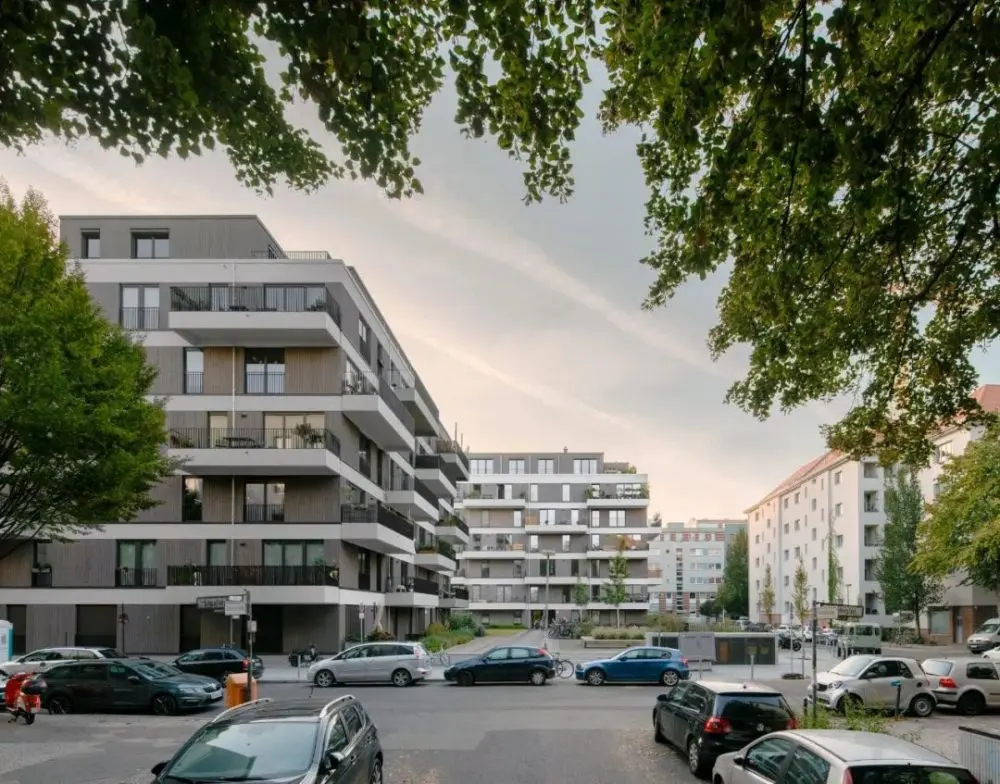
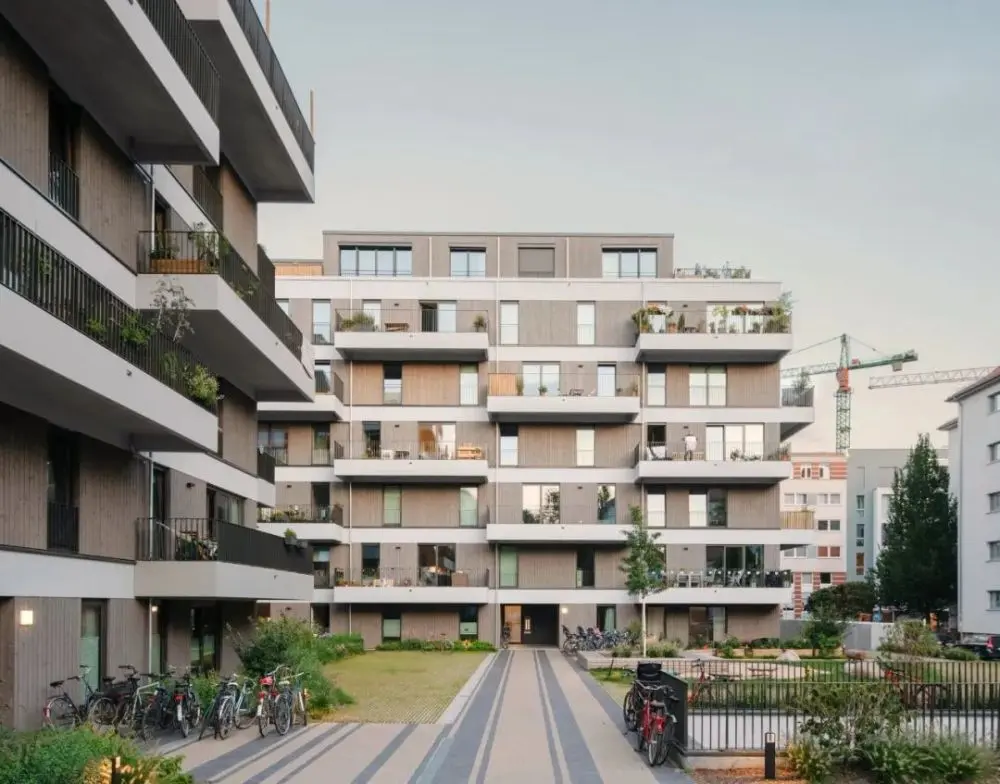
建築是採用木材混合結構建成的,所有外牆和整個屋頂層均由實木製成。木材在內外部均可見。
牆體材料由於其獨特的多層交錯斜木結構,而無需粘合劑或箔。使用沙灘木螺釘可以實現穩定性。
The buildings were realized using a wood hybrid construction. All the exterior walls and the entirety of the attic floor are made of solid timber. The wood has been left visible on the inside and outside. The wall material, because of its unique structure of multi-layered, staggered diagonal timbers, requires no adhesives or foils. Stability is achieved using beach wood screws.
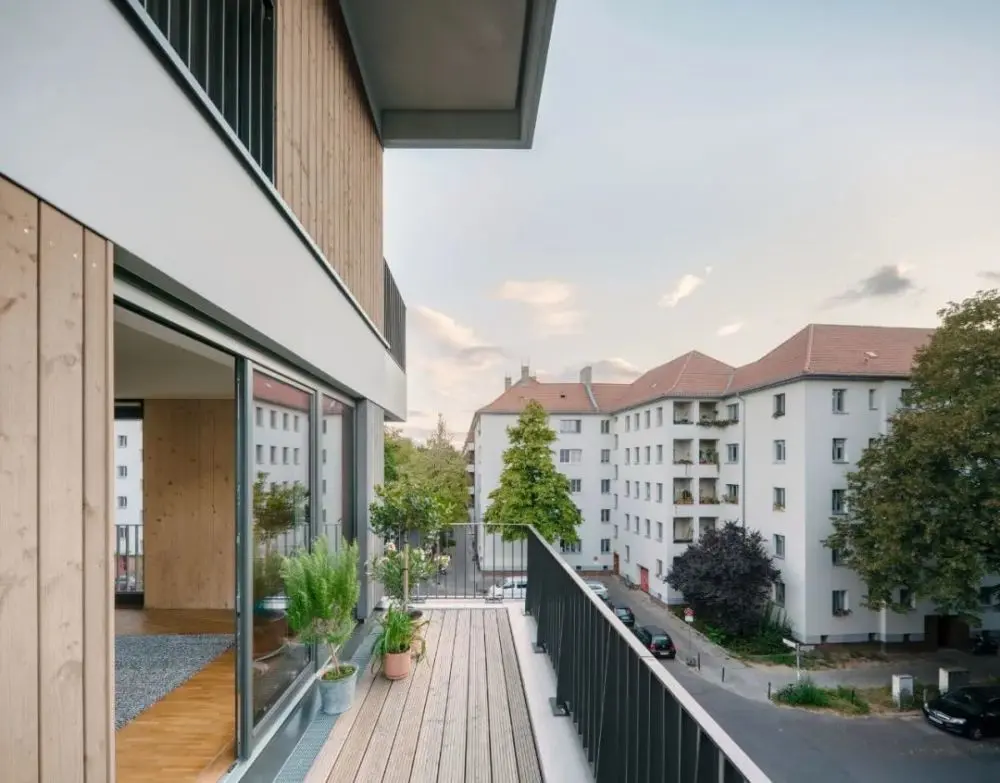
Schmollerplatz公寓樓不是簡單地填補空白或作為單獨的建築,而是在該場地上完成城市的獨立建築單元。
Rather than simply filling a gap or standing as solitary buildings, the apartment buildings on Schmollerplatz are independent building blocks that complete the city at this spot.
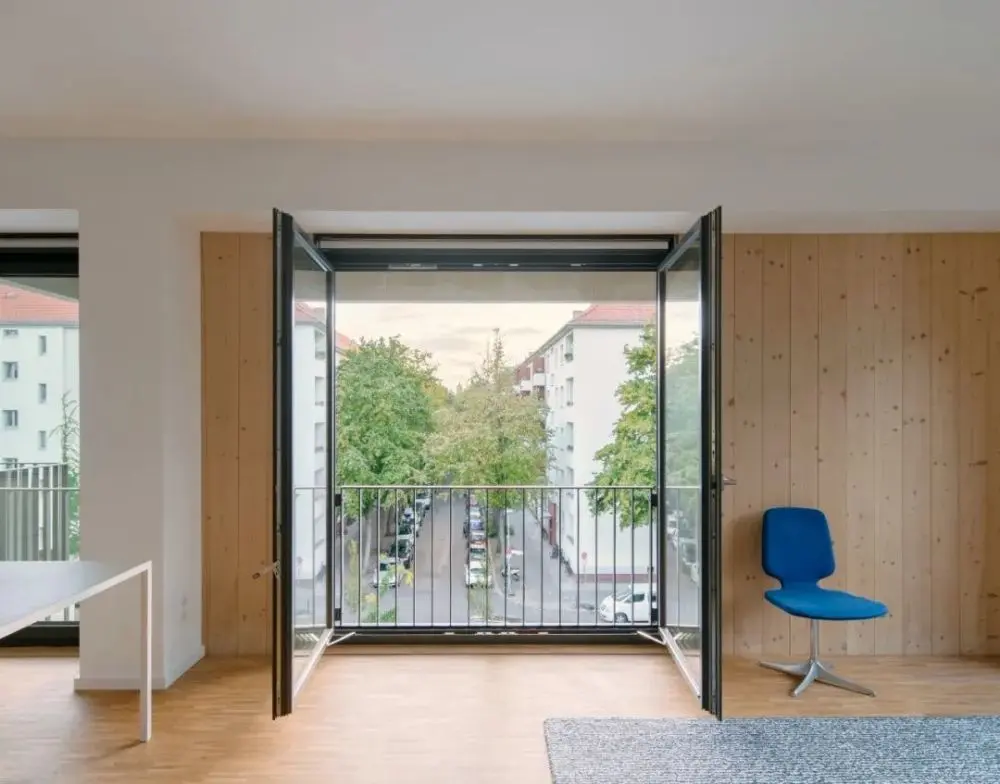
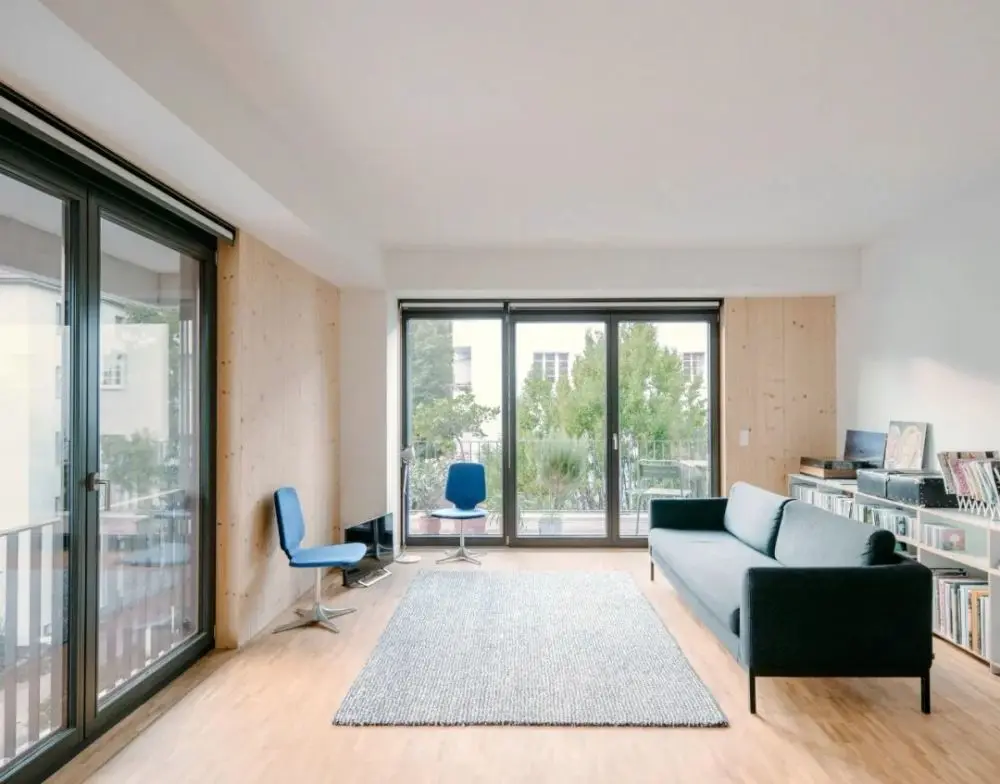

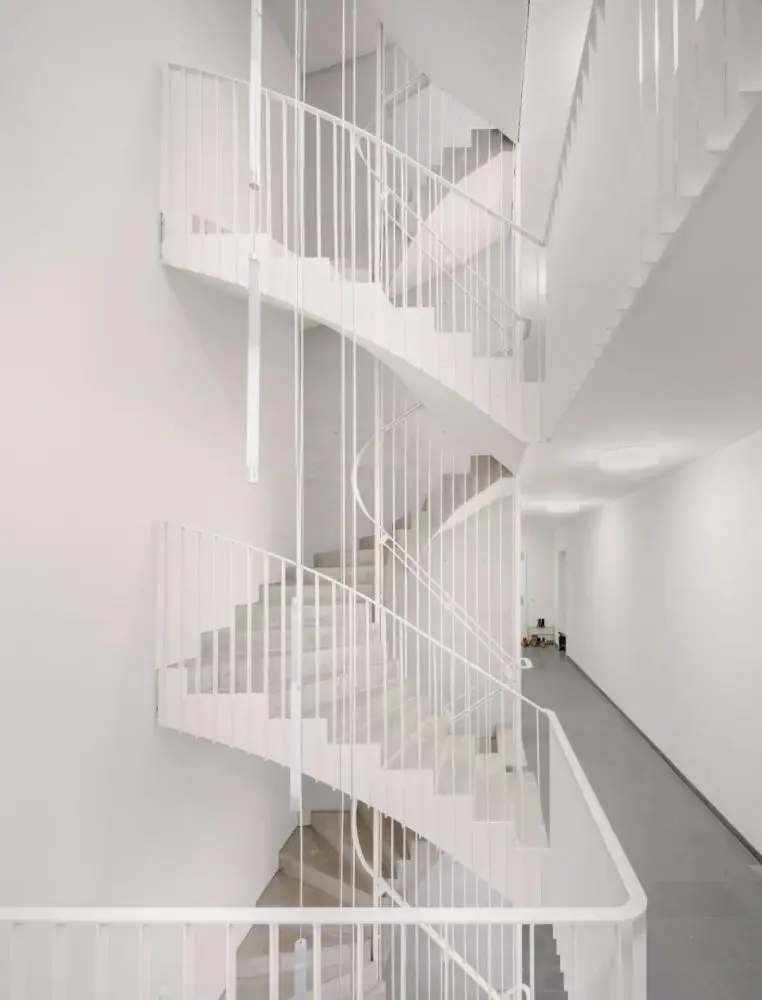

場地平面圖
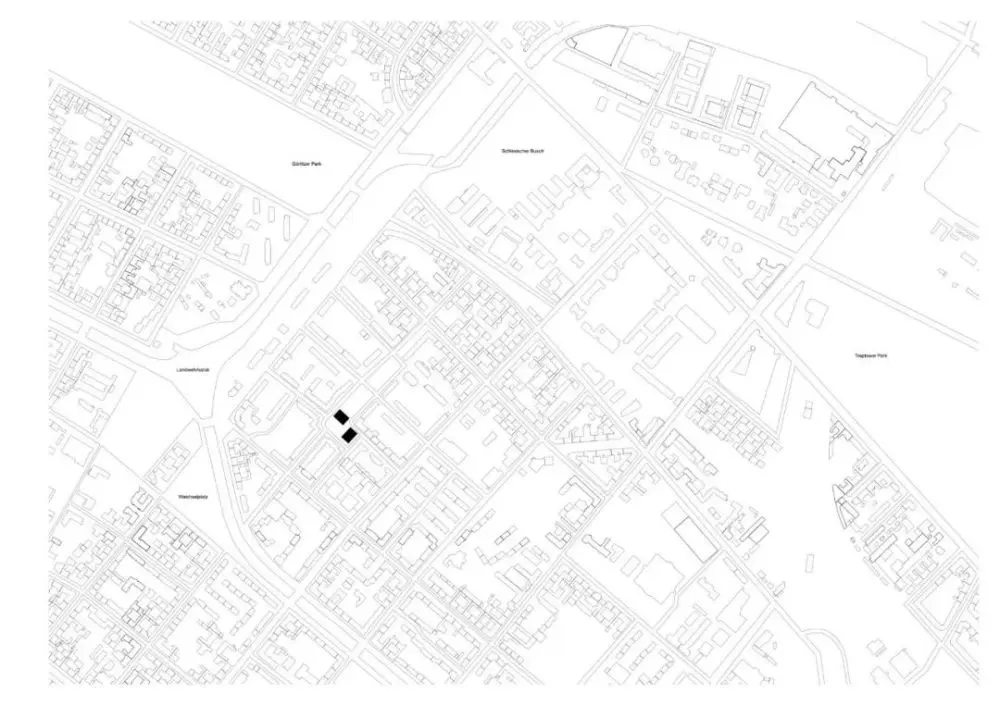
平面圖
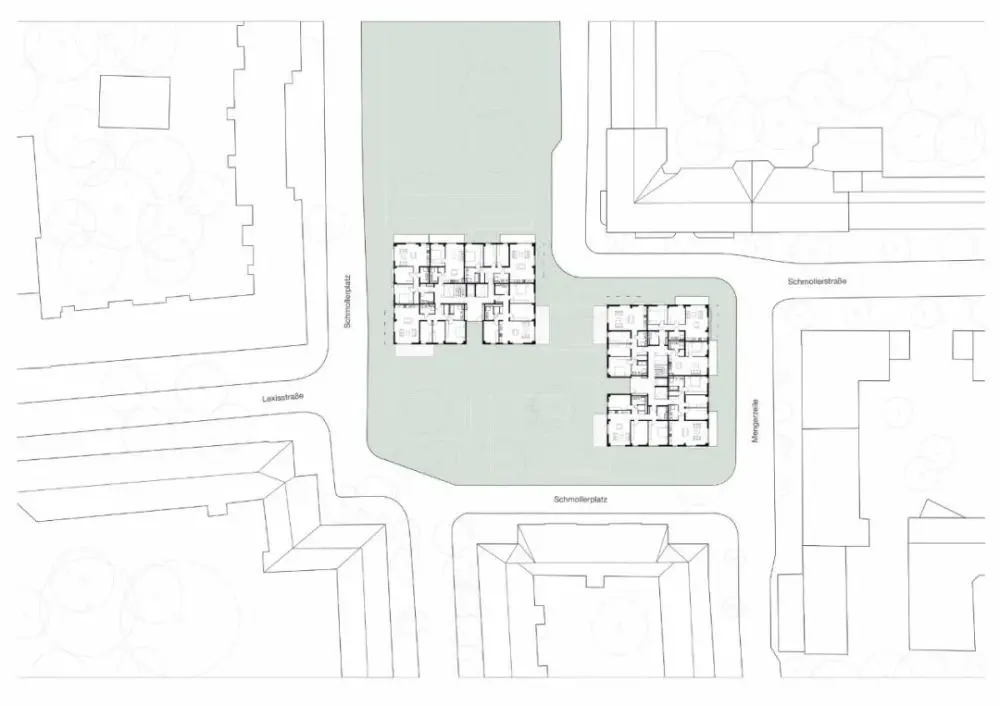

剖面圖
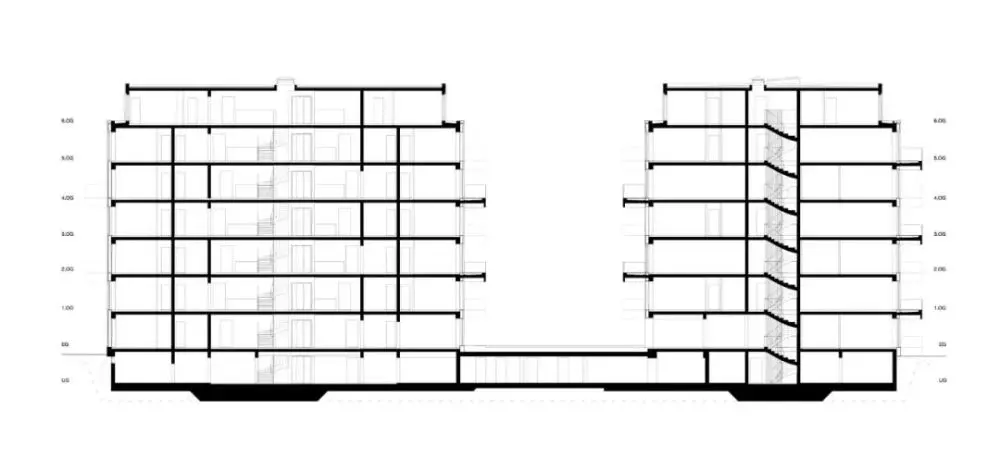
示意圖
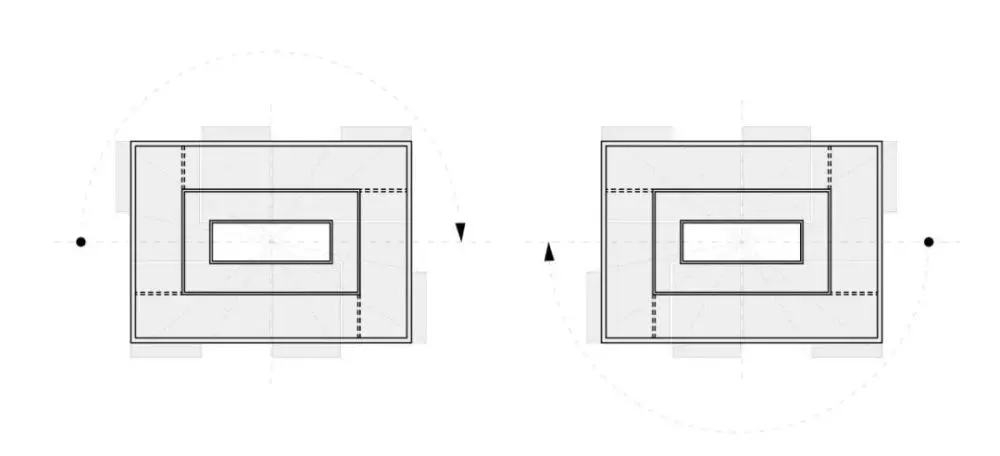
建築師:Zanderroth Architekten
地點:德國 柏林

推薦一個
最專業的地產+建築平臺
每天都有新內容
轉載請超鏈接註明:頭條資訊 » 交錯排列的陽臺+清水混凝土外立面
免責聲明
:非本網註明原創的信息,皆為程序自動獲取互聯網,目的在於傳遞更多信息,並不代表本網贊同其觀點和對其真實性負責;如此頁面有侵犯到您的權益,請給站長發送郵件,並提供相關證明(版權證明、身份證正反面、侵權鏈接),站長將在收到郵件24小時內刪除。